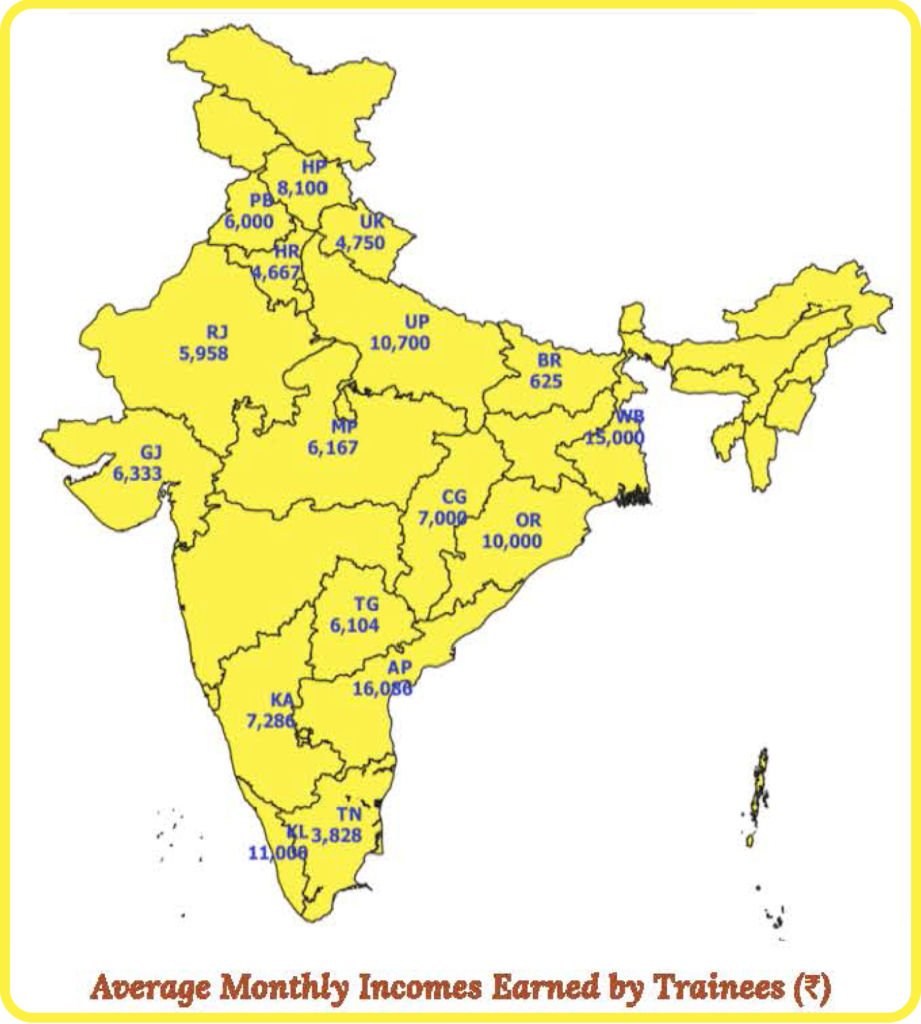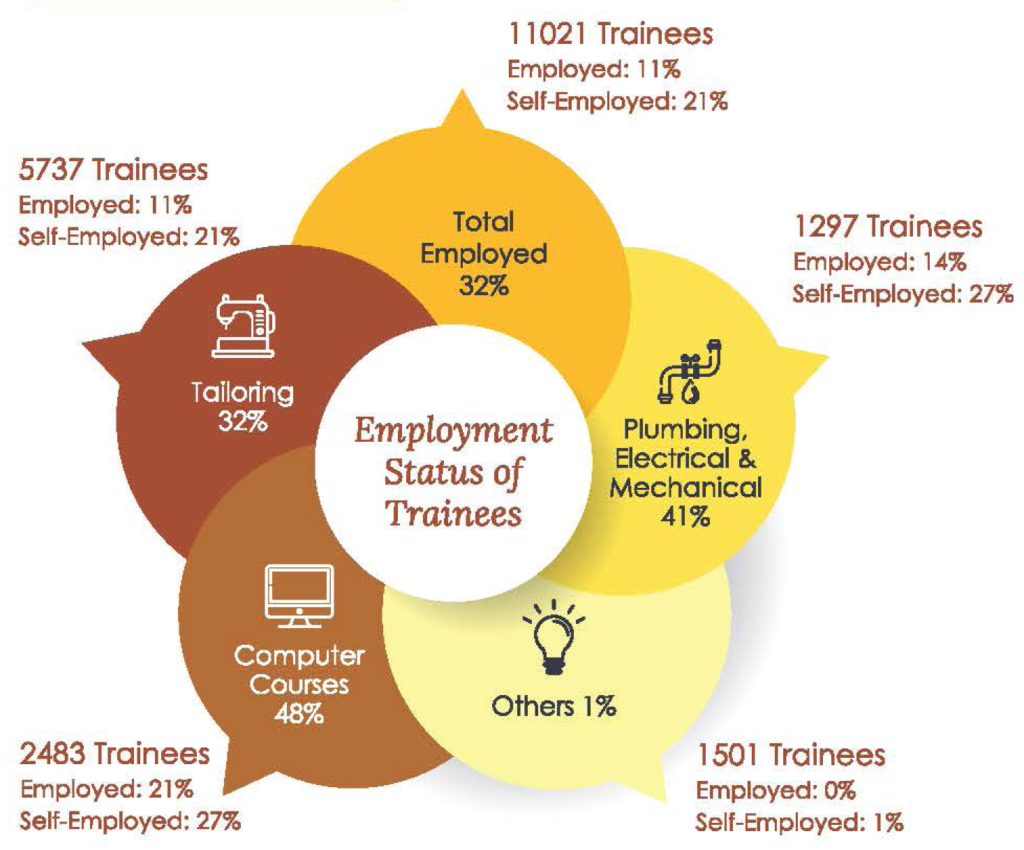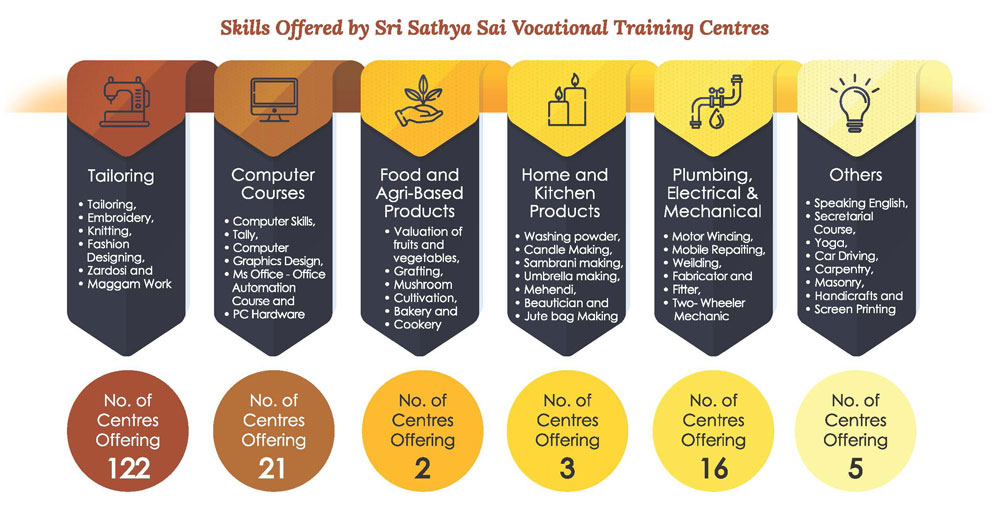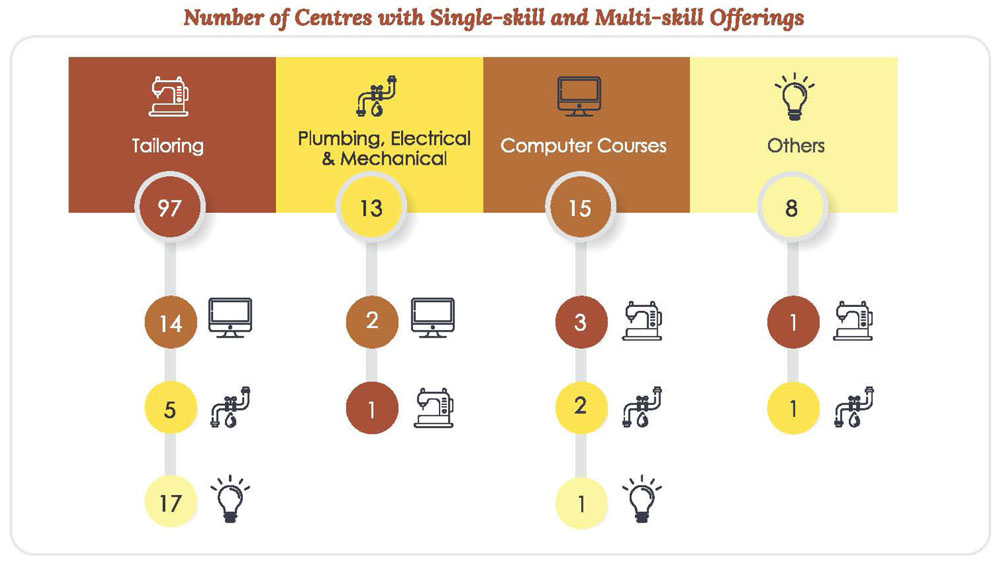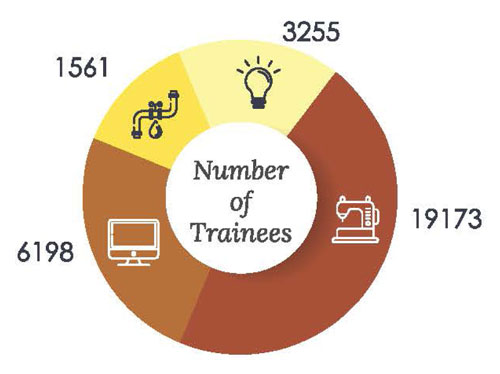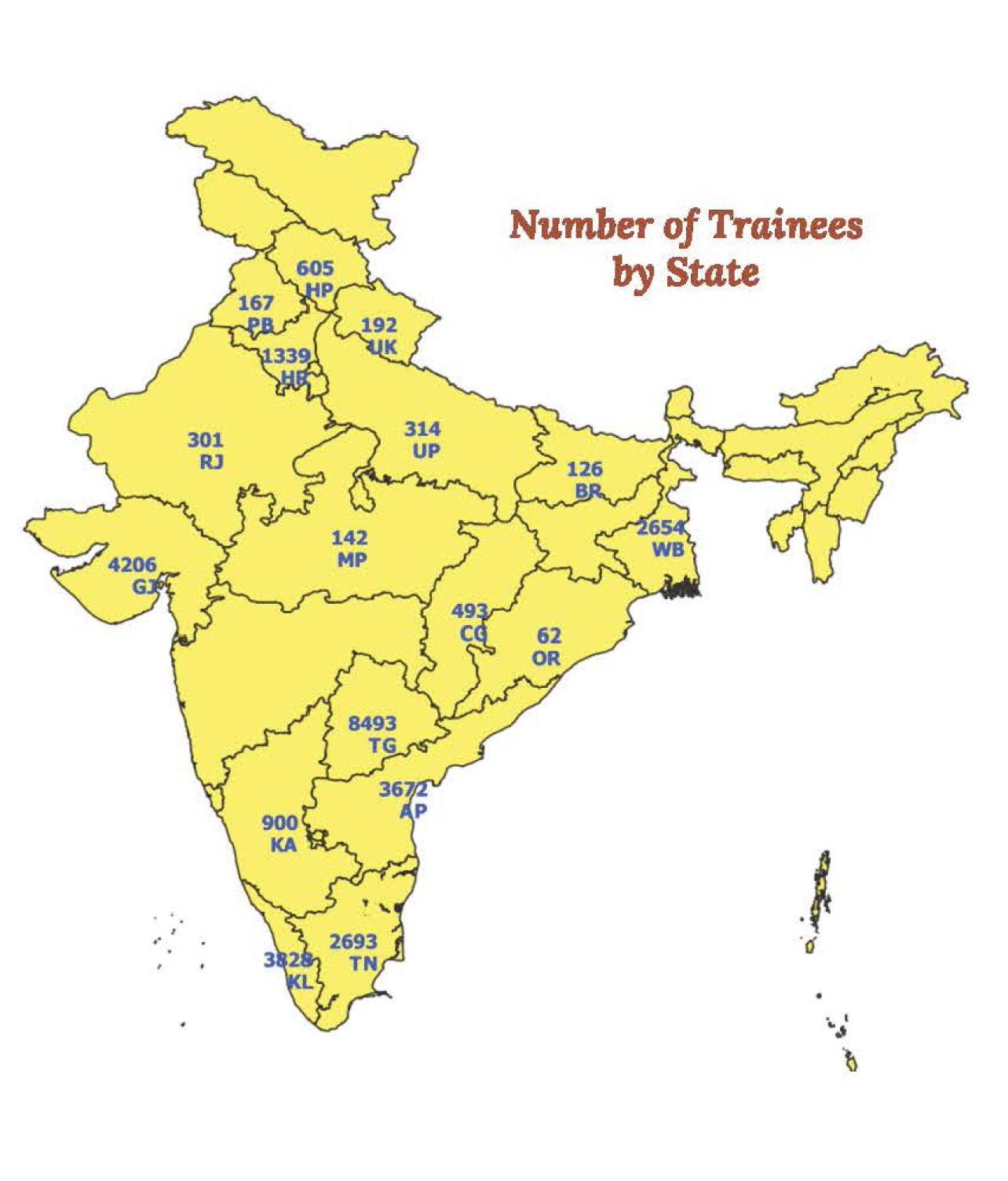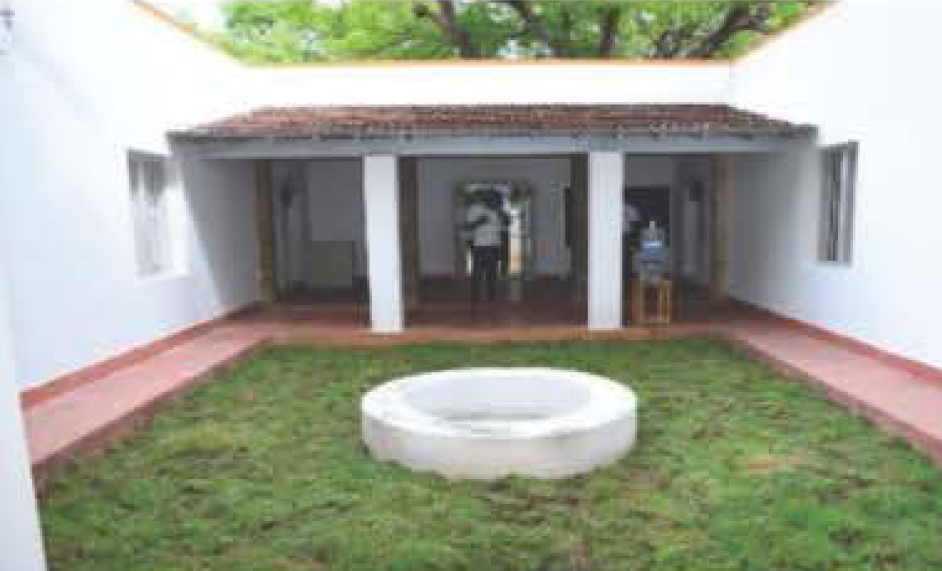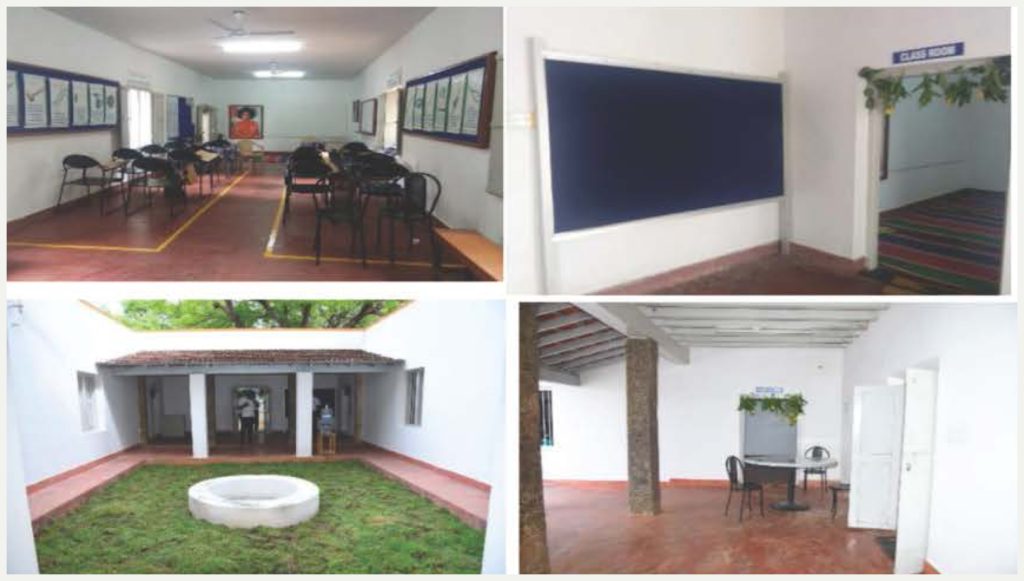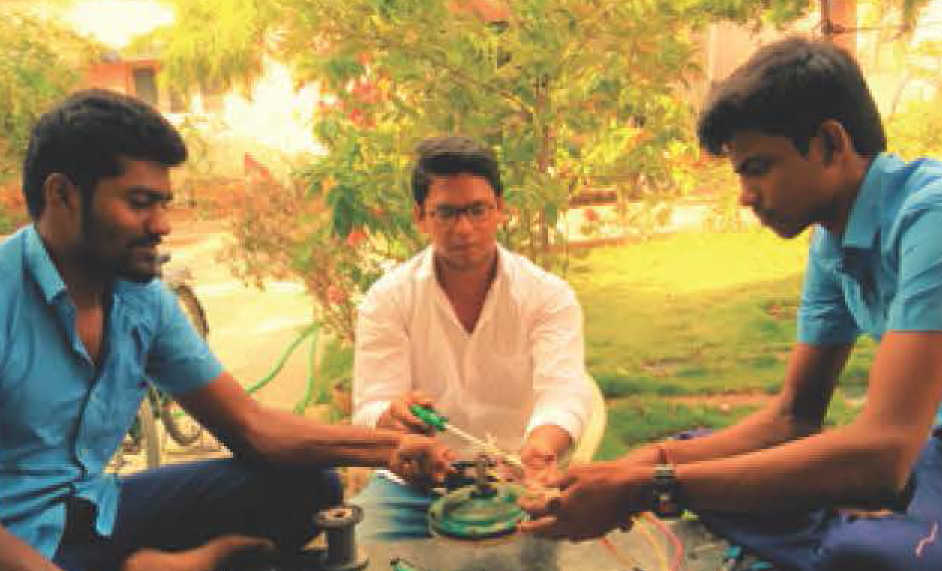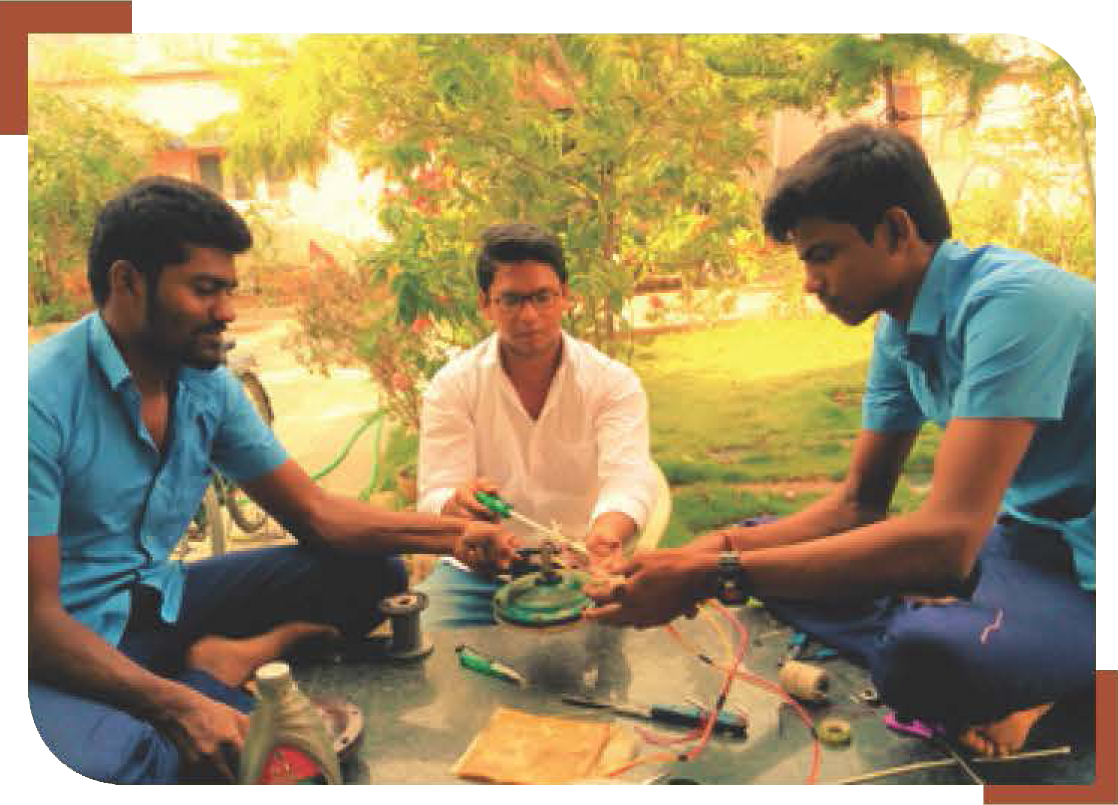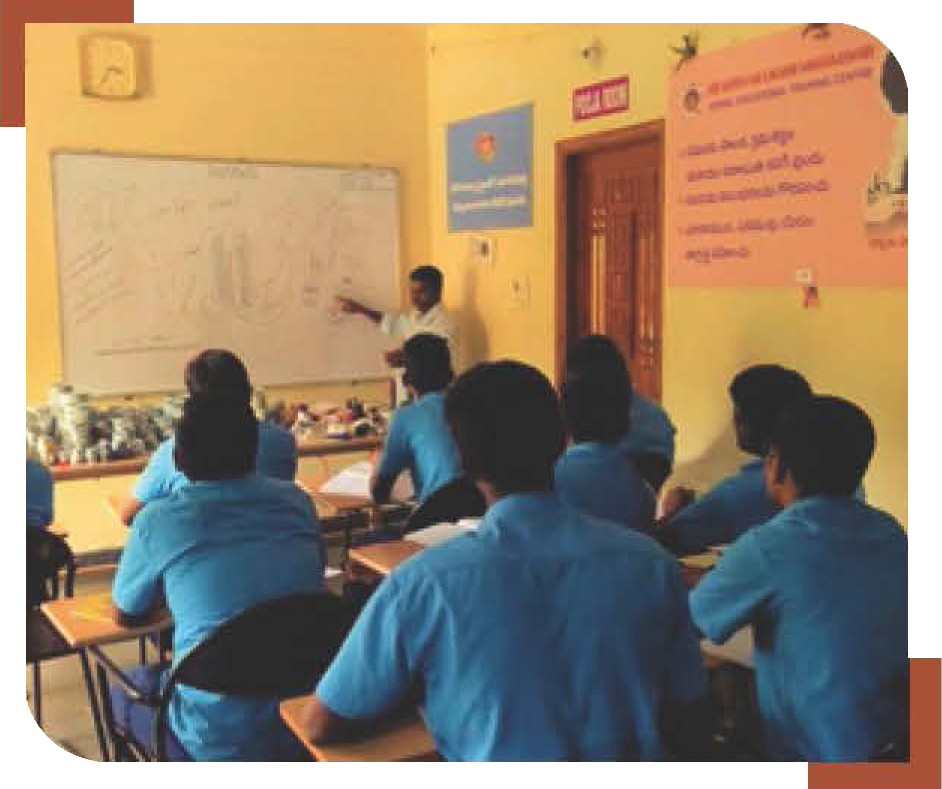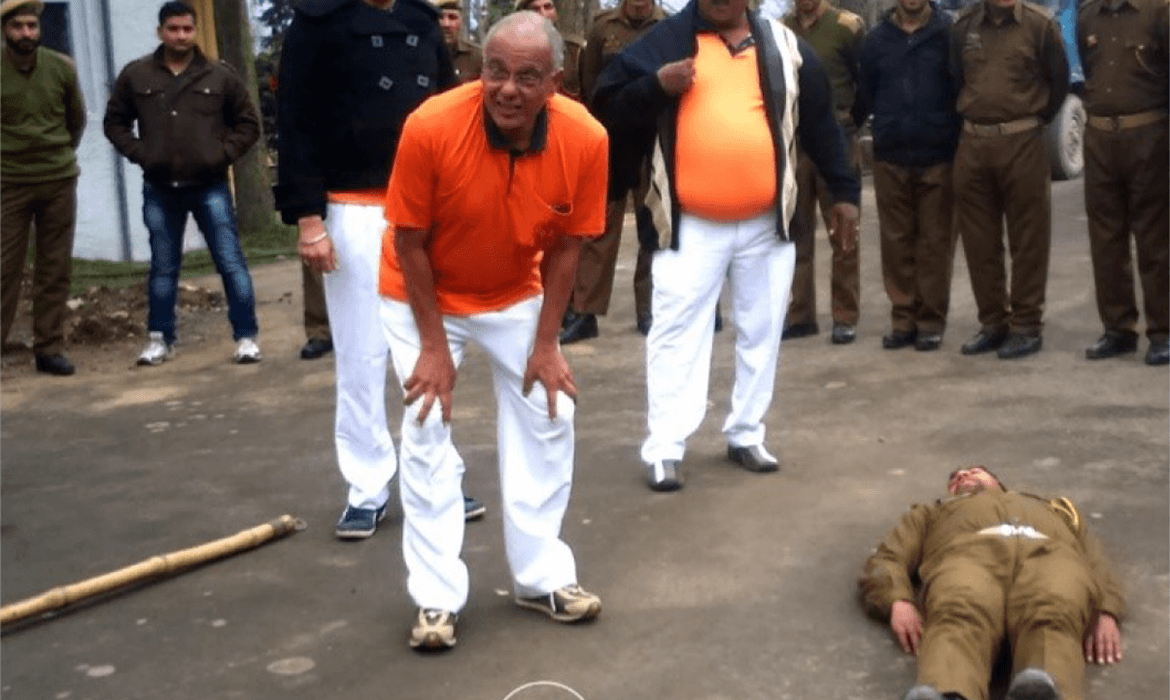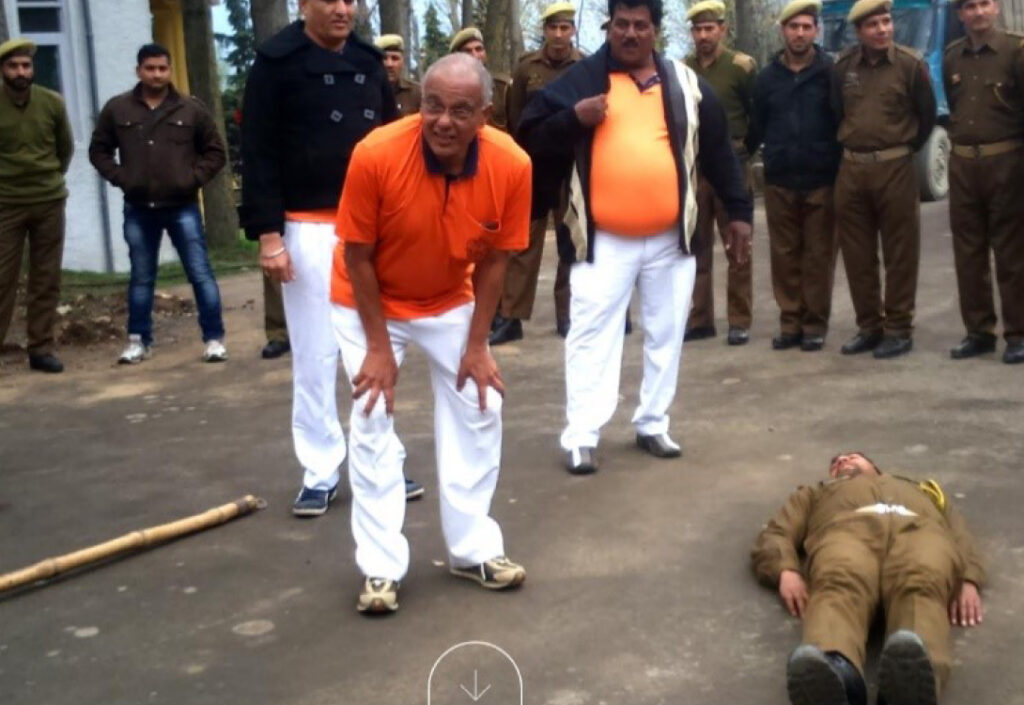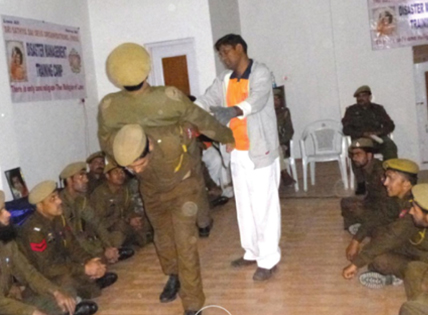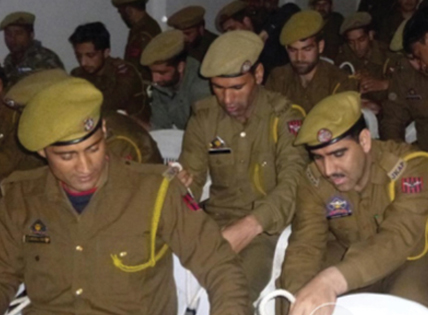Comparison to Average National Income
The average monthly income of ₹8, 117 from the Sri Sathya Sai Vocational Training Programmes is significant when compared to the national income figures. In 2019, Government of India’s Ministry of Statistics and Programme Implementation had estimated per capita annual rural income in India to be ₹40.925 (₹3,410 per month) and ₹98,435 in urban areas {₹8.202 per month). According to the All India Rural Financial Inclusion Survey conducted by NABARD (National Bank for Agriculture and Rural Development} in 2016-17, the average household income per month in rural areas was only ₹8.059, and the average consumption per month is ₹6,646, leaving a surplus per month of only ₹1 ,413. This surplus often goes towards debt and loan payments leaving truly little buffer for growth, emergencies and other expenses towards health and education.
Compared to the national income data therefore, the value added to the lives of the individual youth trainees of the Sri Sathya Sai Vocational Training Programmes and their households is not only substantial but life changing.








































